Greening the grey: How are new concrete technologies tackling decarbonisation?
05 April 2023
Concrete equipment is moving diligently in the right direction, reports Catrin Jones, as new products and services are launched to help decarbonise the industry.
Construction relies heavily on concrete as a building material; it is one of the most widely used resources around the world. The industry consumes about 4 billion tonnes globally every year and emits almost 2.5 billion tons of CO2 emissions. A versatile material, concrete can be used in foundations, roofing, walls, floors, cladding, and infrastructure such as bridges, dams, and more, due to its adaptability.
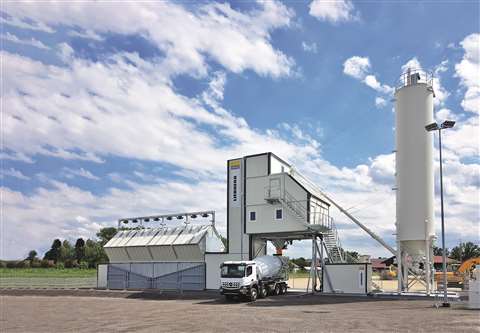 Modular concepts are helping to streamline concrete projects (Photo: Liebherr)
Modular concepts are helping to streamline concrete projects (Photo: Liebherr)
With its versatility, the industry has begun to ask for sustainable alternatives and ways to streamline the way that concrete is used.
France-based civil engineering company Eiffage has developed a plant-based asphalt composed of a bio-sourced binder (derived from by-products of the forestry and paper industry) and recycled road-surfacing materials. This mix is said to significantly reduce CO2 emissions linked to road construction activities.
Modular options for concrete construction
Other companies, such as Liebherr, are focusing on modular concepts to help streamline concrete projects. The new Betomix and Mobilmix mixing plant series can be flexibly combined using prefabricated modules and replace several predecessor series.
For the user, Liebherr says that this means: more freedom when configuring the plants, shorter delivery times, faster assembly and increased parts availability. Improvements to the drive are also said to reduce current consumption by up to 30% and increase weighing accuracy, so that up to 7.5kg of cement can be saved per cubic metre of concrete.
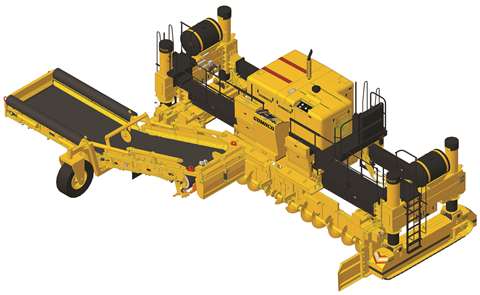 GP460 paver (Photo: GOMACO)
GP460 paver (Photo: GOMACO)
Another area that has seen improvement recently is concrete milling, the removal of concrete. Concrete milling is already an established technology on projects around the globe and, thanks to technological advances, almost all hardnesses and grades of concrete pavement can be cost-efficiently removed. One of the largest concrete removal operations took place recently at Leipzig/Halle Airport in Germany with 15 Wirtgen cold milling machines used.
The first phase of the project involved the removal of the concrete from the north runway and the associated taxiways within 30 days. The resurfacing could only begin after the completion of this first phase. Around 350,000 tonnes of extremely hard concrete reinforced with steel rebar mats had to be removed by this cutting method – a battle against time and tonnage.
Specially modified cold milling machines and years of systematic development in the field of expendable cutting tools guarantee high productivity and efficiency when milling in hard concrete. The removal of reinforced concrete pavements containing tie-bars, dowels and rebar mats is also possible. Selective removal also enables the separation of concrete layers with different properties and the reduction of contaminated material.
The method offers further benefits in terms of environmental protection: As a rule, milled concrete can be recycled without any further treatment. The vibration-free procedure is characterised by low noise and low dust emissions.
“In contrast to milling in asphalt, the enormous hardness of the concrete here meant that we had to take slower milling speeds into account. The wear on the milling tools was also significantly higher. In spite of this, our previous experience from similar projects enabled us to continuously optimise the process,” said project manager Bernhard Fischer.
Making a comeback
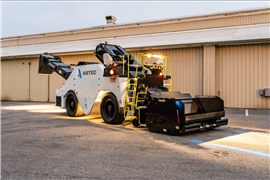 (Photo: Astec)
(Photo: Astec)
On display at this year’s ConExpo in Las Vegas, US, Astec’s SB-3000 Shuttle Buggy MTV looks to streamline the loading and unloading of materials onsite. The Roadtec SB-3000 material transfer vehicle stores and transfers hot-mixed asphalt material from truck to paver for non-stop paving. The anti-segregation auger is said to remix material just before delivery to the paver and the 31.7 metric ton (35 ton) storage capacity allows trucks to unload immediately.
Astec says that the SB-3000 design is focused on safety, comfort and productivity to ensure that it is easier for users to operate and safer to transport.
Also, on display was GOMACO’s GP460 placer/spreader slipform paver – the machine was actually making its world debut at ConExpo. As a placer/spreader with a 60 inch (1524mm) belt, the GP460 will accommodate widths up to 50 feet (15.2m) wide. As a concrete slipform paver, the GP460 will pave widths up to 40 feet (12.2m) wide.
It is said to be built on the framework of the GOMACO two-track GP4 slipform paver with the ability to convert the prime mover into a concrete placer/spreader. The prime mover is equipped with vibrator circuits for paving and auger drive circuits for placing.
Controlling the new technology is made possible with the GOMACO-exclusive G+ digital control system. G+ handles the controls conversion needed for each application while also bringing onboard Machine to Machine (M2M) communication, sonic sensors, 3D machine guidance, and more.
The GP460 is powered by a Caterpillar C7.1 turbocharged diesel engine to drive the conveyor belt and distribute concrete across the grade. The high-volume, 60 inch (1,524 mm) conveyor belt can be mounted on either the left or right side, depending on job-site conditions and the location of the haul road.
With the comeback of trade shows, companies are once again able to see concrete equipment up close and personal. In January, World of Concrete returned to Las Vegas, US with attendance of 48,000 registered professionals that was said to be close to pre-pandemic levels.
“The 2023 edition of World of Concrete far exceeded our expectations. The crowded show floor and packed educational sessions proves how essential meeting face to face is, that it remains important now more than ever to have a space to connect, to learn, to share across the concrete, masonry and construction industries as a vital contributor to our economy,” says Jackie James, Vice President, World of Concrete.
Advancing technology in the concrete sector
One of the biggest trends at both ConExpo and World of Concrete was the continued rise of technology and the impact it is having across the sector. New tech is influencing the way concrete construction equipment is designed and used.
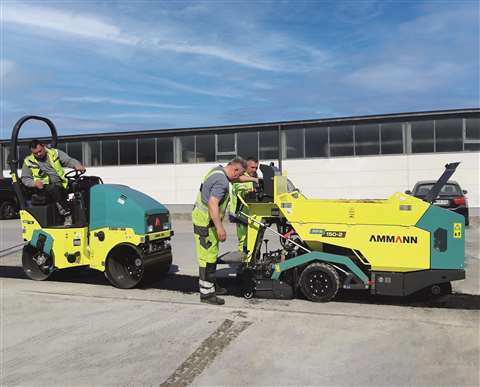 Ammann says that one of their biggest drivers is to decarbonise concrete (Photo: Ammann)
Ammann says that one of their biggest drivers is to decarbonise concrete (Photo: Ammann)
Ingrid Schaar, assistant managing director at Ammann, breaks down how is it being implemented and why we are moving towards technologically advanced concrete equipment. “Since recycled material does not have the same properties as normal aggregates, new metering techniques are required here. The flow behaviour of recycled material requires special storage and metering technology,” she comments.
“Due to the larger selection of binders, the cement scales and the number of metering inlets were also adapted to the new challenges. Modern concrete mixer cleaning systems are more efficient than manual cleaning and thus help to reduce the amount of water needed to clean the concrete plant.”
Raphael Scheps, CEO of UK-based concrete technology company Converge, agrees with Schaar that technology is making its way into the sector, bringing a number of innovative ways to work.
When asked whether data can help streamline the time spent on concrete projects, Scheps replies promptly, “Certainly. With real-time data of in-situ concrete curing, you can take action at the soonest or safest moment possible. You take action precisely when you mean to rather than waiting for slow and sporadic lab results,” he says.
Converge digitises and optimises the physical world of construction by building AI and cloud-based technologies that are powered by a suite of smart wireless sensors. The company’s ConcreteDNA system gives users real-time concrete curing data and AI predictions that are viewable from any device.
Optimising construction
Scheps believes that we’re merely scratching the surface of what’s possible for technology in the concrete industry. “Construction is one of the least digitised industries in the world, and yet one of the most fundamental to civilization; we will always need structures to maintain our society. We need construction technologies to make sure that construction is as optimal as possible to minimise adverse impact on the planet,” he says.
“One of our biggest drivers is to decarbonise concrete, the second most consumed material on earth. On a planet with finite resources our mission is to digitise the physical reality of construction in order to make it more efficient, safe, and sustainable.”
Sustainability is also a key focus for Ammann. “Due to the increasing scarcity of resources, the industry is more and more dependent on the use of alternative materials,” says Schaar. “The recycled material is used more and more for concrete production. In addition to this, new cements with less clinker content are being developed to reduce CO² emissions.”
For the whole sector, sustainability is increasingly high on the agenda. New materials coming to market for concrete production as well as new innovative types of concrete will both help to conserve resources and reduce CO² emissions.
Digitising physical reality on the jobsite could be the answer to building more sustainably but that can’t be done unless we measure. He says, “By digitising physical reality, we can track and measure it, allowing us to evaluate the impact of novel materials, methodologies and technologies. In this way we can continuously optimise processes to maximise impact,” says Scheps.
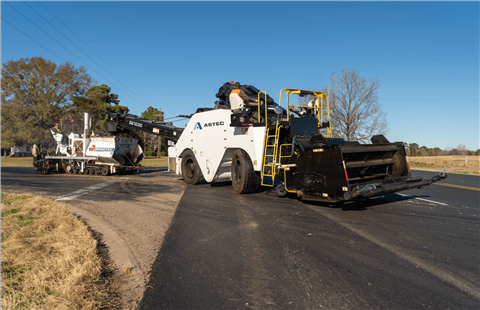 Astec’s SB-3000 Shuttle Buggy MTV looks to streamline the loading and unloading of materials onsite (Photo: Astec)
Astec’s SB-3000 Shuttle Buggy MTV looks to streamline the loading and unloading of materials onsite (Photo: Astec)
Measuring is also a key component of Doka’s Concremote. The solution uses sensors to measure the temperature and calculates compressive strength of the concrete structure. As the concrete reaches the predefined target value, Concremote will automatically notify the user in real-time by text message or email.
Elsewhere in the industry, the lack of skilled workers has meant that contractors are turning to more semi-automated features but despite construction’s growing enthusiasm for technology, the concrete industry is still largely reliant on workers to manage the machines.
“The task of the simple machinist has changed,” Shaar says. “Due to the high technical operating standards, the mechatronics engineer is a very important person here to monitor and maintain the many automatically controlled processes.”
Due to the changing nature of the construction landscape, the skills shortage and other global challenges the industry is seeking new ways to adapt. Off-site manufacturing has become an alternative solution and reduces the amount of workers that are needed onsite whilst equipment manufacturers are developing ways to streamline the way we work on concrete projects. New technologies are continuing to expand project capacity and decrease the time spent on particular challenges, thus increasing sustainability.
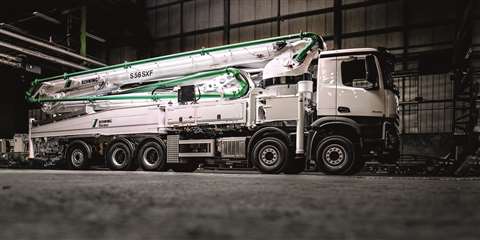
One of the key regions for this increased growth, according to the report, is the Asia Pacific market. The report also looks at the impact of the Covid-19 pandemic and the war in Ukraine on the concrete pumps market.
Main players in this sector include: Alliance Concrete Pump, Liebherr, Schwing Stetter, Sany Heavy Industry and Zoomlion.
Ecocem, a provider of low carbon solutions for the cement and construction industries, has launched Superfine – a low-carbon, super high grade GGBS for specialist applications onto the European market.
Ecocem Superfine is a finer Ground Granulated Blastfurnace Slag (GGBS) designed to be used as a specialist additive in binders, industrial mortars, UHPC, and precast concrete. In addition to reducing carbon emissions, the use of Superfine can improve rheology, strength, and durability of the concrete.
Developed by grinding Granulated Blastfurnace Slag (GBS) to a very fine particle size, Superfine can be added to products to significantly improve their strengths in applications such as high performance and ultra-high-performance concrete.
The Superfine GGBS contains no chemical additions of chromium and has a low pH, making it a safe and effective additive for building material formulations.
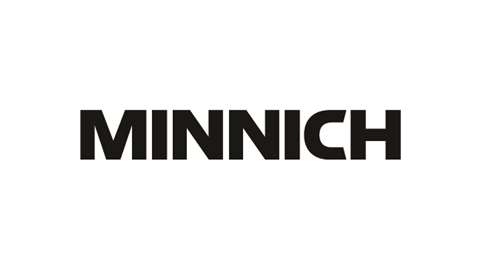
“We’ve evolved over the years and want our brand to reflect that. We still design and manufacture concrete vibrators, but we’ve expanded to include flex shaft vibrators and concrete drills,” said Rob Minnich, President/CMO of Minnich Manufacturing.
The company was founded in 1968 to convert concrete paving machines from high-cycle vibrators to hydraulic vibrators. The previous logo included emanating rings, which represented the ripple effect of vibrators. Today, their product line expands beyond the vibrator product line and vibrator monitoring system to include dowel-pin drills, a dust collection system and an upright, lightweight utility drill.
STAY CONNECTED



Receive the information you need when you need it through our world-leading magazines, newsletters and daily briefings.
CONNECT WITH THE TEAM








